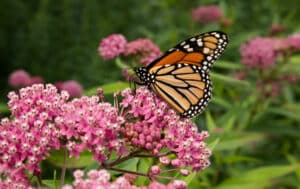
Rose Milkweed: Essential Native Plant for Monarch Butterflies
Rose milkweed is a beautiful native plant that can add color and life to your garden. This perennial flower, also known as Asclepias incarnata, grows
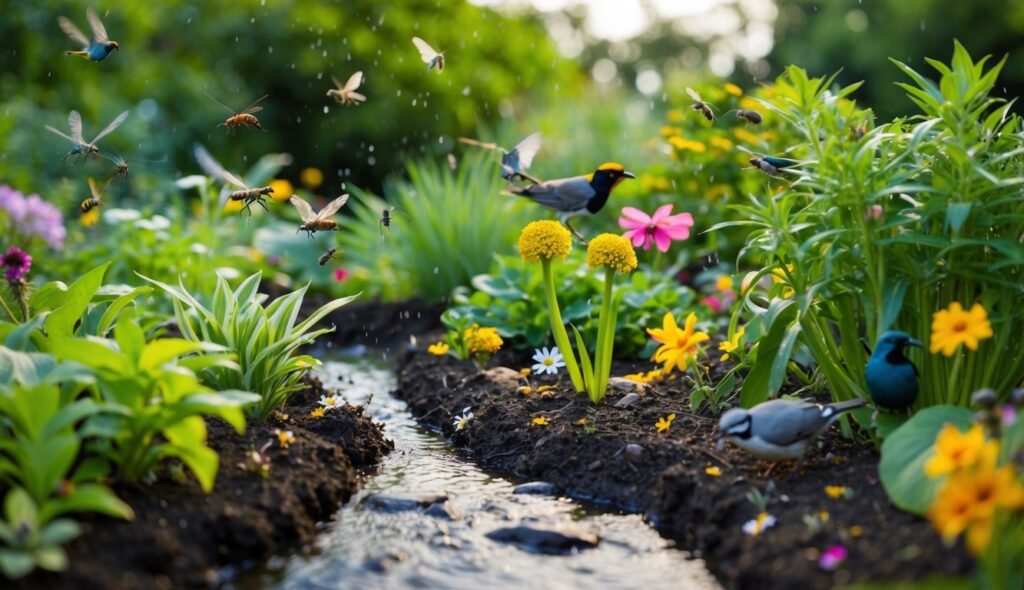
Rain gardens are a smart way to manage water on your property. These gardens catch and filter rainwater runoff from roofs, driveways, and lawns.
You can reduce water pollution and flooding by adding a rain garden to your yard.
Rain gardens look nice and help the environment too. They use native plants that don’t need much care.
The plants and soil in a rain garden clean the water as it soaks into the ground.
You can design a rain garden to fit your space and style. It can be big or small, formal or natural-looking.
Rain gardens save water and create habitat for birds and butterflies. They’re an easy way to make your yard more eco-friendly.
Rain gardens are special garden areas that catch and filter stormwater runoff. They help clean water and reduce flooding in a natural way.
Rain gardens are shallow depressions in the ground. They collect rainwater from roofs, driveways, and other hard surfaces.
The garden’s plants and soil soak up this water.
You can think of a rain garden like a sponge. It holds water for a short time before it seeps into the ground. This process is called infiltration.
The plants in a rain garden are chosen for their ability to handle both wet and dry conditions. They have deep roots that help water move into the soil faster.
Rain gardens help keep pollutants out of streams and lakes. As water flows through the garden, plants and soil filter out dirt, oils, and chemicals.
This cleaning process improves water quality in your area. It’s good for fish, plants, and other wildlife that depend on clean water.
Rain gardens also reduce erosion and flooding. They slow down fast-moving water and let it soak into the ground slowly.
You can test your soil’s ability to absorb water with a simple percolation test. This helps you choose the best spot for your rain garden.
By building a rain garden, you’re helping protect the environment right in your own yard.
Creating a rain garden takes careful planning. You’ll need to consider the best spot, size, and soil type for your garden to work well.
Pick a spot at least 10 feet from your house. Look for a low area where water naturally flows.
Avoid places near septic systems or utilities. Full sun is best, but partial shade can work too.
Test the soil drainage by digging a hole and filling it with water. If it drains within 24 hours, that spot will work well.
Make sure the area has a gentle slope to direct water into the garden.
Your rain garden’s size depends on the area it will drain. Measure the surfaces that will send water to the garden, like your roof or driveway.
A good rule is to make the garden about 20-30% of that drainage area.
For shape, go with what fits your yard best. Kidney shapes, ovals, and crescents are popular choices. They blend in nicely with most landscapes.
Keep the width at least 10 feet to help with water flow.
Test your soil type before you start digging. Sandy soil drains fast, while clay holds water longer.
Most rain gardens need a mix of sand, compost, and your native soil.
If your soil drains poorly, you may need to dig deeper and add more sand.
For fast-draining soil, add organic matter to help hold moisture.
Aim for a soil depth of 4-8 inches for most plants.
Level the bottom of your garden to spread water evenly. Create a berm on the low side to hold water during heavy rain. This helps your garden work better and prevents flooding.

Building a rain garden requires careful planning and execution. Following proper techniques ensures your garden functions effectively and looks great.
Start by marking the garden’s outline. Dig the area to a depth of 4-6 inches. Slope the sides gently for a natural look. Remove grass and rocks as you dig.
Use a shovel or small excavator for larger gardens. Check the soil type as you dig. Clay soils need more depth than sandy ones.
Create a flat bottom to help water spread evenly. Measure the depth often to keep it consistent.
Build a berm on the downhill side using soil from the excavation. Make it 3-4 inches higher than the garden’s rim. Pack it firmly to prevent erosion.
Shape an overflow area where excess water can exit safely. This prevents flooding during heavy rains.
Make the overflow wide and shallow. Line it with rocks or hardy plants to stop erosion. Ensure it directs water away from buildings and hard surfaces.
Test your soil to see what it needs. Most gardens benefit from adding compost. Mix in 2-3 inches of compost with the existing soil.
For clay soils, add sand to improve drainage. For sandy soils, add more organic matter to help retain water.
Rake the soil smooth after mixing. Remove any remaining rocks or debris.
Let the soil settle for a few days before planting.
Add a 2-3 inch layer of mulch on top. This helps retain moisture and prevent weeds. Use hardwood mulch or river stones, depending on your garden’s style.
Choosing the right plants and arranging them properly are key to a successful rain garden. Native species that can handle both wet and dry conditions work best.
Look for native plants with deep root systems. These help absorb water and prevent soil erosion. Good choices include:
Pick a mix of plants that bloom at different times. This gives your garden color all season long. Make sure to check which plants grow well in your area.
Place taller plants in the center or back of the garden. Put shorter ones in front. This creates a nice look and lets all plants get enough sun.
Group plants in odd numbers, like 3 or 5. This looks more natural than even groupings. Space plants closely to soak up more water and block weeds.
Leave some open areas for water to pool. Don’t pack plants too tightly. Aim for about 6-10 plants per square meter (1-1.5 plants per square foot).
Rain gardens need regular care to stay healthy and work well. You’ll need to do some ongoing tasks and deal with weeds and pests.
Water your rain garden during dry spells. New plants need extra water in their first year.
Add a 2-3 inch layer of mulch each spring. This helps keep moisture in and stop weeds.
Replace dead plants as needed. Prune back overgrown plants in late winter or early spring. Remove leaves and debris that build up. This keeps water flowing freely.
Add compost once a year to feed the soil. But don’t use chemical fertilizers. They can wash into waterways and cause problems.
Pull weeds by hand when the soil is moist. Focus on young weeds before they spread. Use mulch to stop weed seeds from growing.
Avoid pesticides in your rain garden. They can harm helpful insects and wildlife.
Instead, pick off pests by hand when you see them.
Encourage natural predators like birds and ladybugs. They eat many garden pests. Plant native flowers to attract these helpful creatures.
If a pest problem gets bad, try organic sprays made from soap or neem oil. Always follow the directions on the label.
Rain gardens help manage water from roofs and paved areas. They catch and filter runoff before it reaches storm drains or waterways.
Direct your roof’s downspouts into the rain garden. This moves water away from your home’s foundation.
You can use pipes or rock-lined channels to guide the flow.
Make sure the garden is big enough to handle the water volume. A good rule is to make it about 20% of the roof area that drains to it.
Place the garden at least 10 feet from your house. This protects your basement from excess moisture. Slope the ground away from your home to the rain garden.
Rain gardens can also manage runoff from driveways and patios. These hard surfaces don’t let water soak in, creating more runoff.
Build your garden in a low spot where water naturally flows. You may need to dig a shallow channel to direct water from paved areas.
Use berms or small walls to keep water in the garden. This gives it time to soak into the soil.
Pick plants that can handle both wet and dry conditions. Native species often work best. They have deep roots that help water soak in faster.
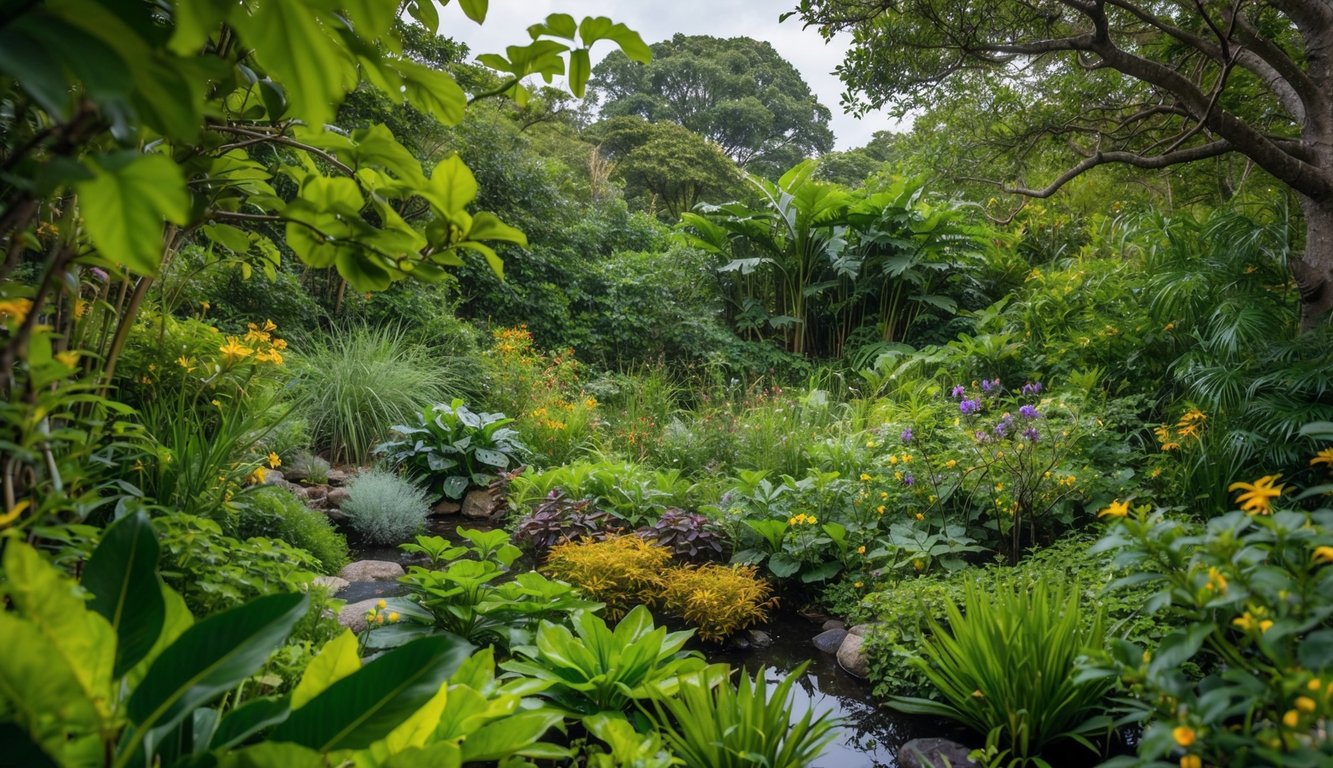
Rain gardens attract many animals and plants. They help local ecosystems thrive by providing food and shelter for different species.
Rain gardens bring butterflies and birds to your yard. The native plants in these gardens offer nectar for butterflies and hummingbirds.
Bees buzz around the flowers, collecting pollen. You’ll see colorful butterflies fluttering from bloom to bloom.
Birds visit rain gardens to eat seeds and insects. They may build nests in nearby shrubs or trees. Some birds use the shallow water for bathing and drinking.
To draw more wildlife, pick plants with different bloom times. This ensures food is available throughout the growing season.
Rain gardens create small but important wildlife habitats. They give animals places to rest, eat, and raise young.
These gardens filter water and reduce pollution. Clean water is vital for fish, frogs, and other water-loving creatures.
By planting native species, you support local food webs. Native insects depend on these plants, and birds eat those insects.
Rain gardens also connect green spaces in urban areas. This helps wildlife move safely between larger habitats.
Your rain garden can be a stepping stone for animals traveling through the neighborhood.

Rose milkweed is a beautiful native plant that can add color and life to your garden. This perennial flower, also known as Asclepias incarnata, grows

Nodding onion plant is a charming native plant found across North America. Its drooping pink or white flower clusters add a whimsical touch to gardens

Lupinus perennis, known as wild lupine, is a stunning native wildflower of eastern North America. This perennial plant adds a splash of color to meadows

Pussy willows are a beloved sign of spring’s arrival. These fuzzy catkins appear on willow shrubs before their leaves emerge. Their soft, silvery buds resemble


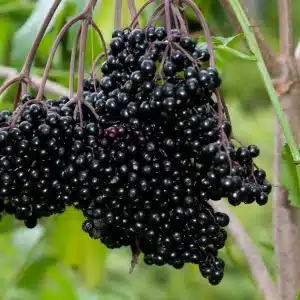
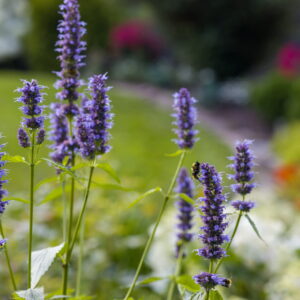
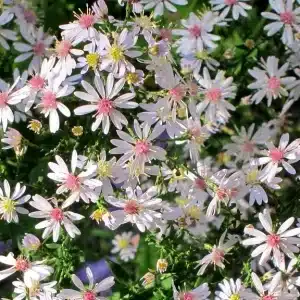
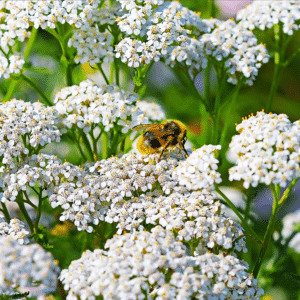
BUYING HIGH QUALITY PLANTS HAS NEVER BEEN EASIER
Our plants are easy to order, plant, and enjoy! Bringing pollinators to your property improves vegetable yields – Feed the bees!
Sign up for our email list!
Copyright © 2025 Bumbee’s | Web design and SEO by Searles Graphics